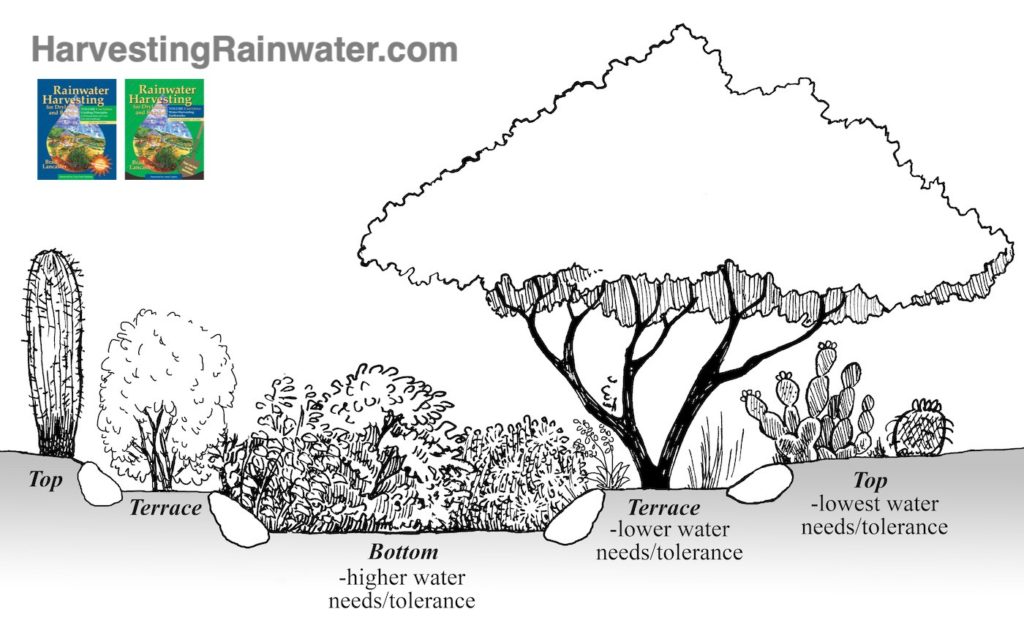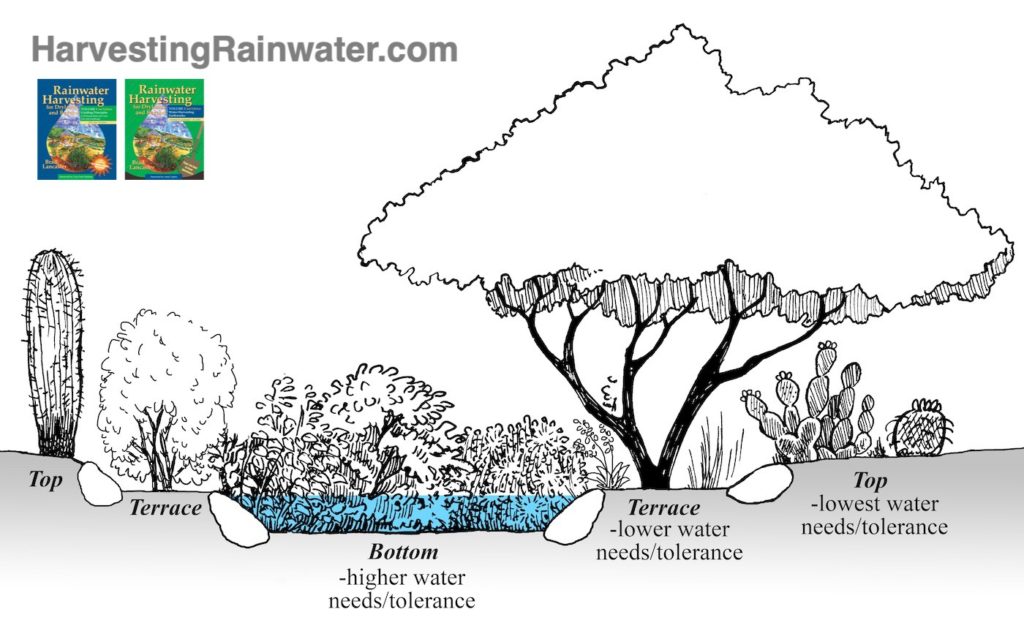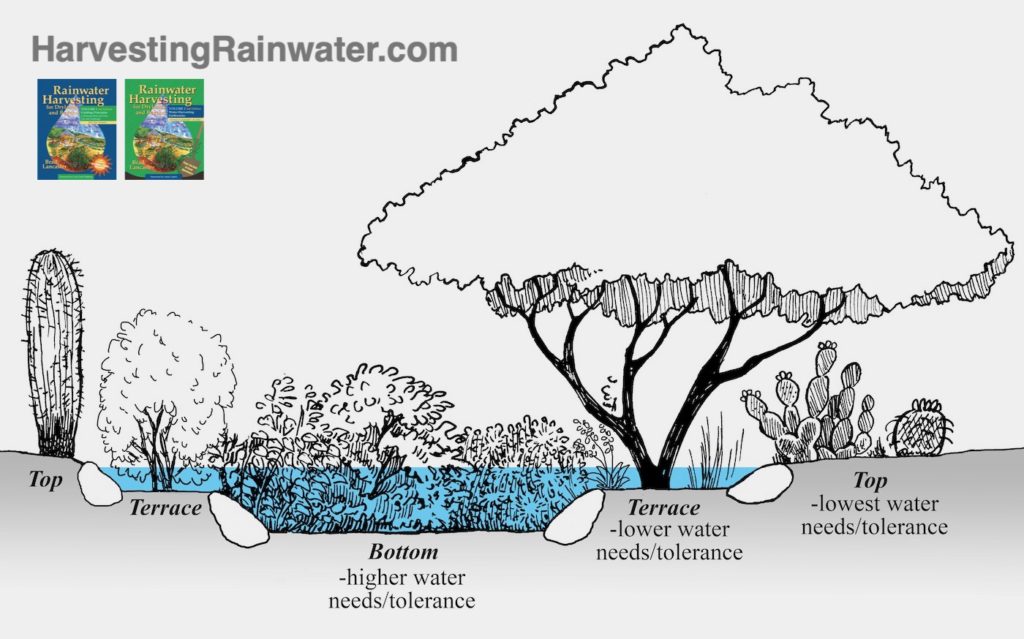Rain Garden Planting Zones
There are three rain-garden zones, each for a different microclimate within a rain garden:
Bottom – typically bottom of a basin or swale. Prone to temporary pooling of water and cold air (cool night air pools in low spots).
Terrace – typically atop a terrace or pedestal within—or on bank of—a basin or swale. Shallower and less-frequent temporary pooling than in bottom zone.
Top – area beside—not in—a basin or on its banks, where plants’ root crowns stay high and dry, but plants’ roots can access water harvested in basin; top of berm. Driest and warmest of the three zones (avoids cool-air pooling).
Note that the Rain-Garden-Zone classification can also be used as a Greywater-Garden Zone when greywater is discharged into a water-harvesting earthwork or rain garden.
Ideally, your Terrace Zone elevations are such that incoming stormwater will cover the terraces in an average good storm.
See the Important Elevation Relationships of Backwater Basins for more on this.
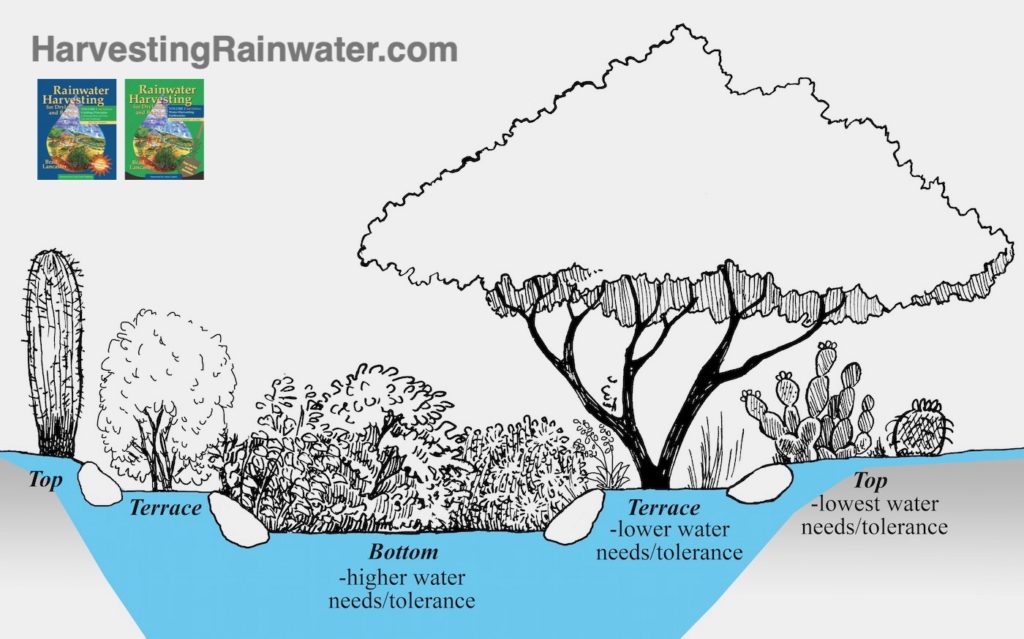
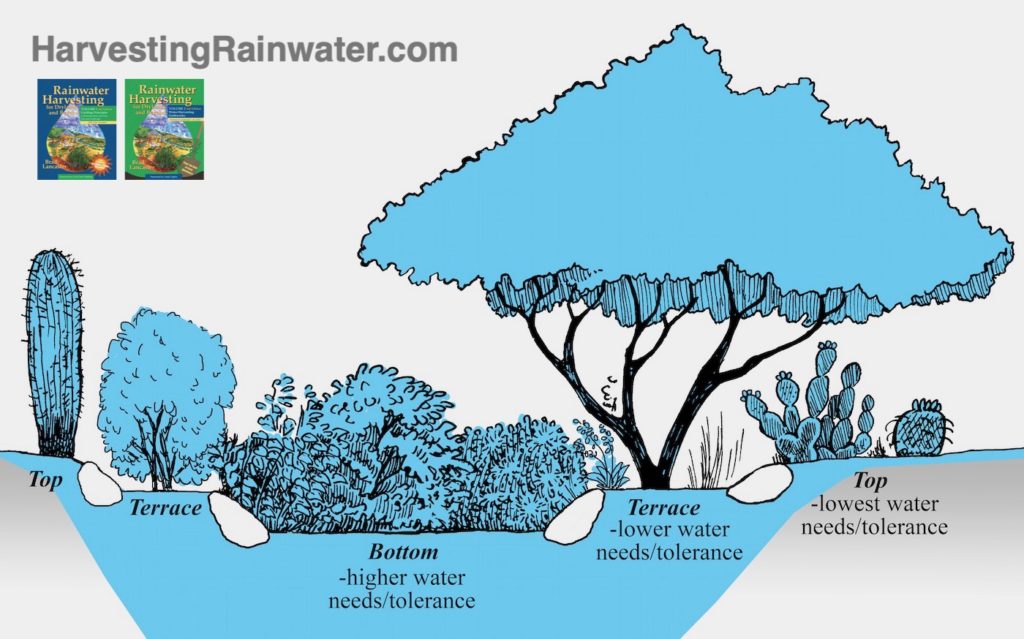
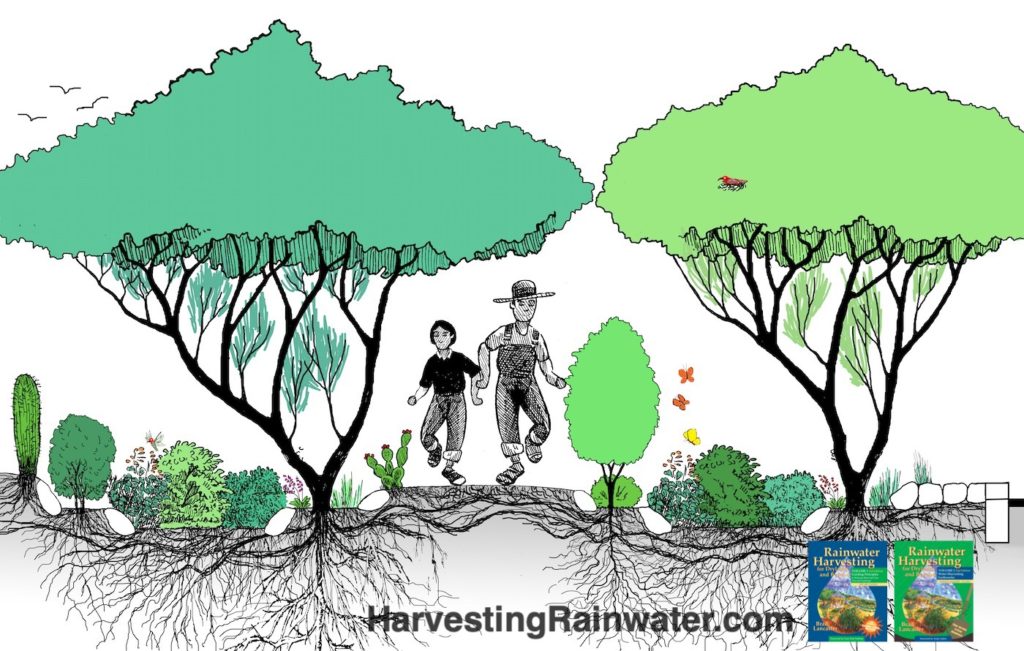
For additional rain garden planting zone illustrations that show a tree planted on a pedestal acting as a terrace in the middle of a basin, scroll to the end of this page.
How do you know which microclimate or rain-garden zone a plant wants to be in?
Go take a hike! Out in the healthy wilds, in an area with a similar climate and growing conditions to where you want to plant, see what plants typically grow in the low spots where they get more water. Those are the plant species likely best suited for the bottom zone. What plants grow along the banks or sides, rather than in the bottoms, of depressions or ephemeral waterways? Those are likely your terrace-zone plants. And what plants grow in the higher, drier areas? Which plants like to be able to access the water harvested in a basin with their roots, while keeping their root crown (at the base of the plant’s trunk or stem) high and dry to avoid crown rot (e.g., fruit trees)? Those are likely your top-zone plants. Just note that the amount of water received by your rain garden or water-harvesting earthwork or basin can affect the ideal rain-garden zone for the plants within it. For example, a plant that is usually best placed in the terrace zone of a rain garden that receives rainfall and substantial runoff from a street, roof, or patio may be better placed in the bottom zone of a different rain garden that receives only rainfall, and thus far less water.
Ideal rain-garden zones for plants in different bioregions are also listed in the Multi-Use Plant Lists for Water-Harvesting Landscapes section of this website. I have purposely tried to keep this Rain-Garden Zone classification simple. This simplicity should help maintain clarity of action when a team is working together to plant a rain garden. Each plant can have its ideal Zone marked on its planting pot (before planting). All plants (still in their pots) can then be placed in their ideal rain-garden zones within or beside the water-harvesting earthwork. Once you have everything where you want it, the planting can begin. Plant nurseries can enhance their offerings by adding plants’ ideal Rain-Garden Zone to their plant-identification signs. In addition, they can group Rain-Garden plants by their ideal Rain-Garden Zone to make things more convenient for their customers. Customers who need a plant suited for the bottom of a basin could then simply go to the bottom Rain-Garden-Zone plant section. Customers will be especially happy if the nursery has demonstration rain gardens with established/mature specimens. Seeing is believing—and understanding.
I invite you to contribute to this website’s Multi-Use Plant Lists for Water-Harvesting Landscapes. The lists are a template for creating a similar list specific to your area. Colleagues and I created these multi-use plant lists partly as a reaction to rain-garden plant lists that we found to be frustratingly limited in their information. All too often such lists give only the rain-garden zone and flowering times of the plant. There is rarely any information guiding choices of plants that generate resources beyond ornamentation—such as food, medicine, pollinator corridors, summer shade, winter sun, livestock fodder, etc. We also purposely separated native and exotic plants into different lists because we find the native plants to be best-suited for harsher microclimates which receive only direct rainfall and runoff.
Plant the rain (in water-harvesting earthworks or rain gardens) before you plant the native and it should thrive rather than just survive. The non-native exotic plants are better suited for more-protected, cared-for, and (in drylands) better-watered microclimates. We emphasize food-bearing plants in our exotic-plant lists, and we have a rule for such exotics: Before we plant the exotic fruit tree, we always first plant greywater (via a gravity-fed greywater-harvesting system) where that fruit tree will go. That way the exotic plant will have the water it needs without being dependent on a conventional irrigation system that wastefully uses virgin drinking water rather than free on-site waters such as rainwater, stormwater, and greywater.
For more on various types of rain gardens and figuring out the ideal rain garden planting zone for various plants see the just released, full-color, revised editions of Brad’s award-winning books Rainwater Harvesting for Drylands and Beyond, Volume 1, 3rd Edition and Rainwater Harvesting for Drylands and Beyond, Volume 2, 2nd Edition. 
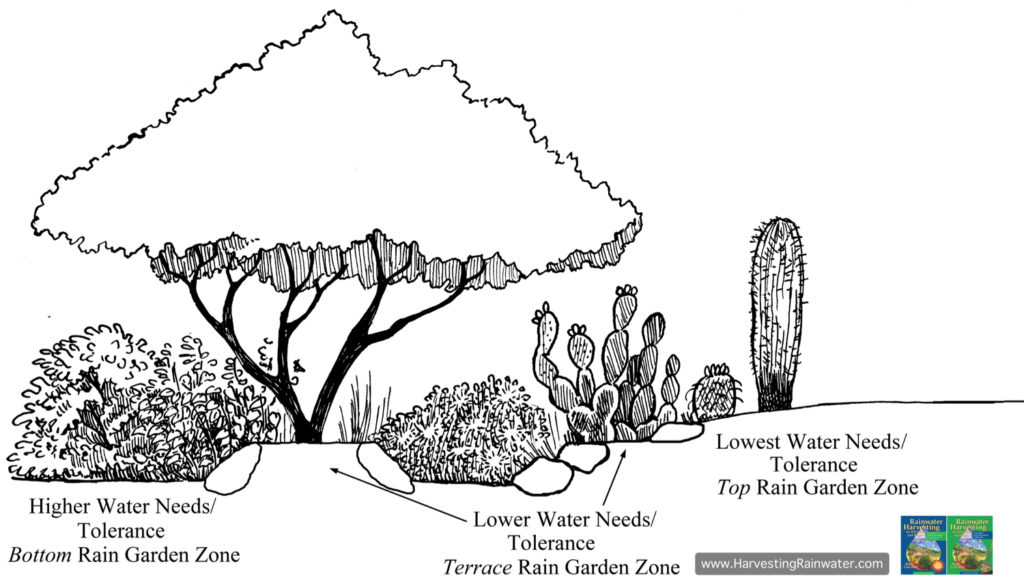
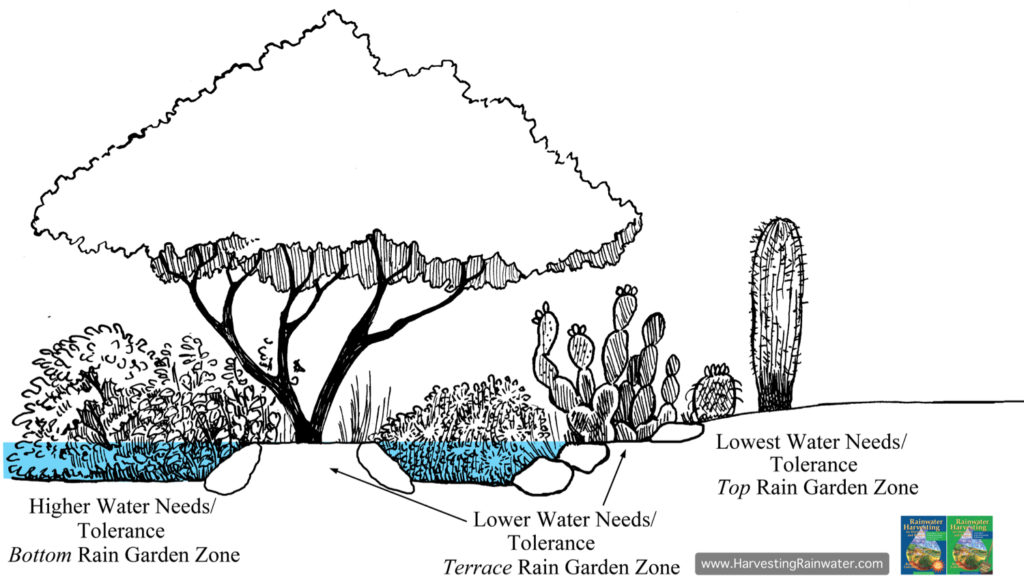
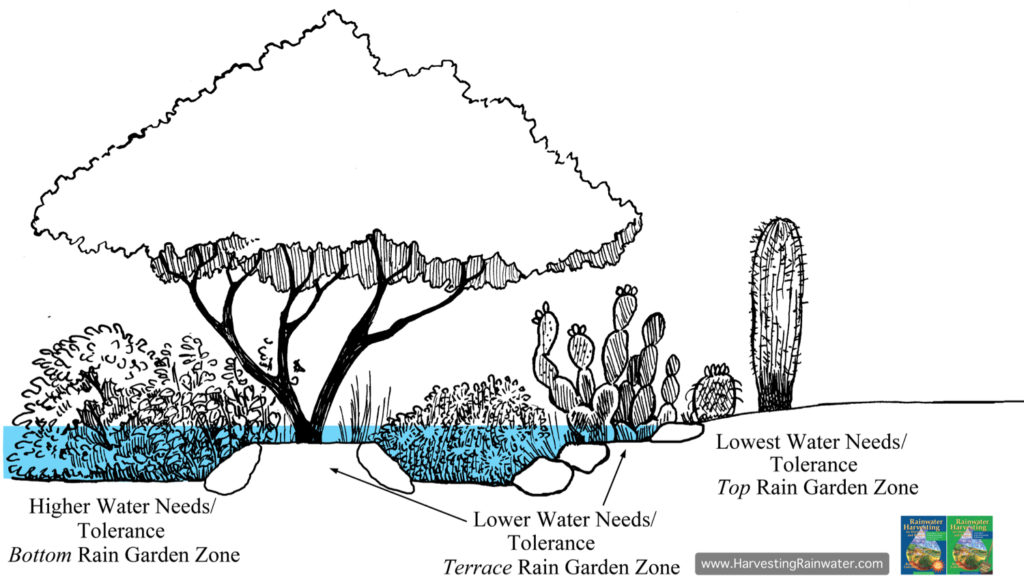
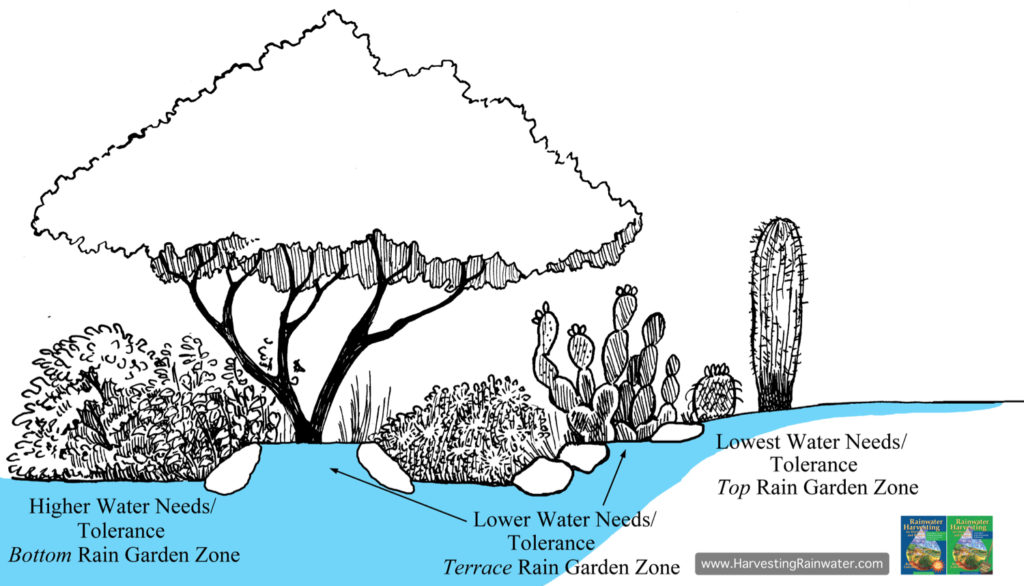
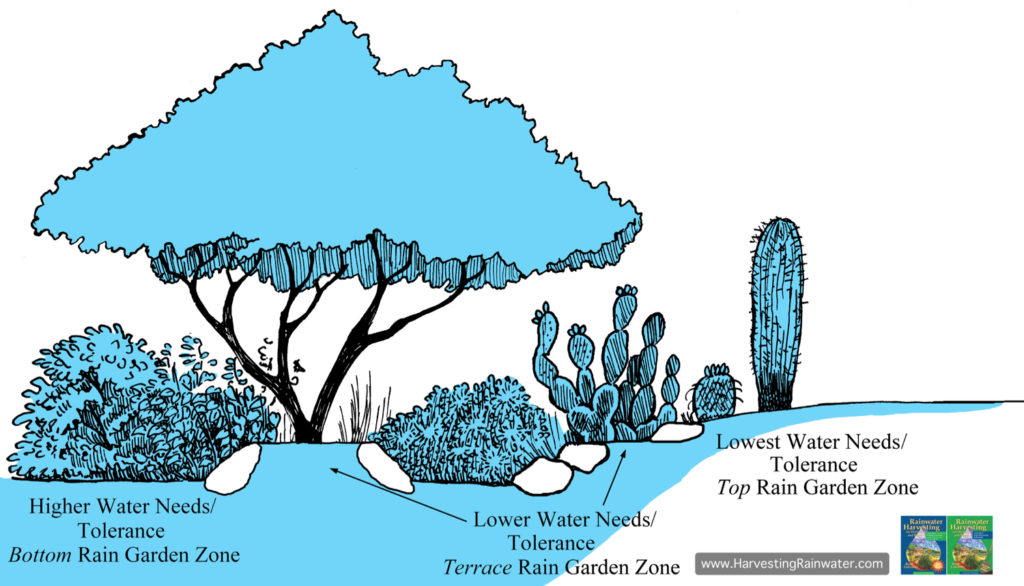
See the new, full-color, revised editions of Brad’s award-winning books
– available a deep discount, direct from Brad:



